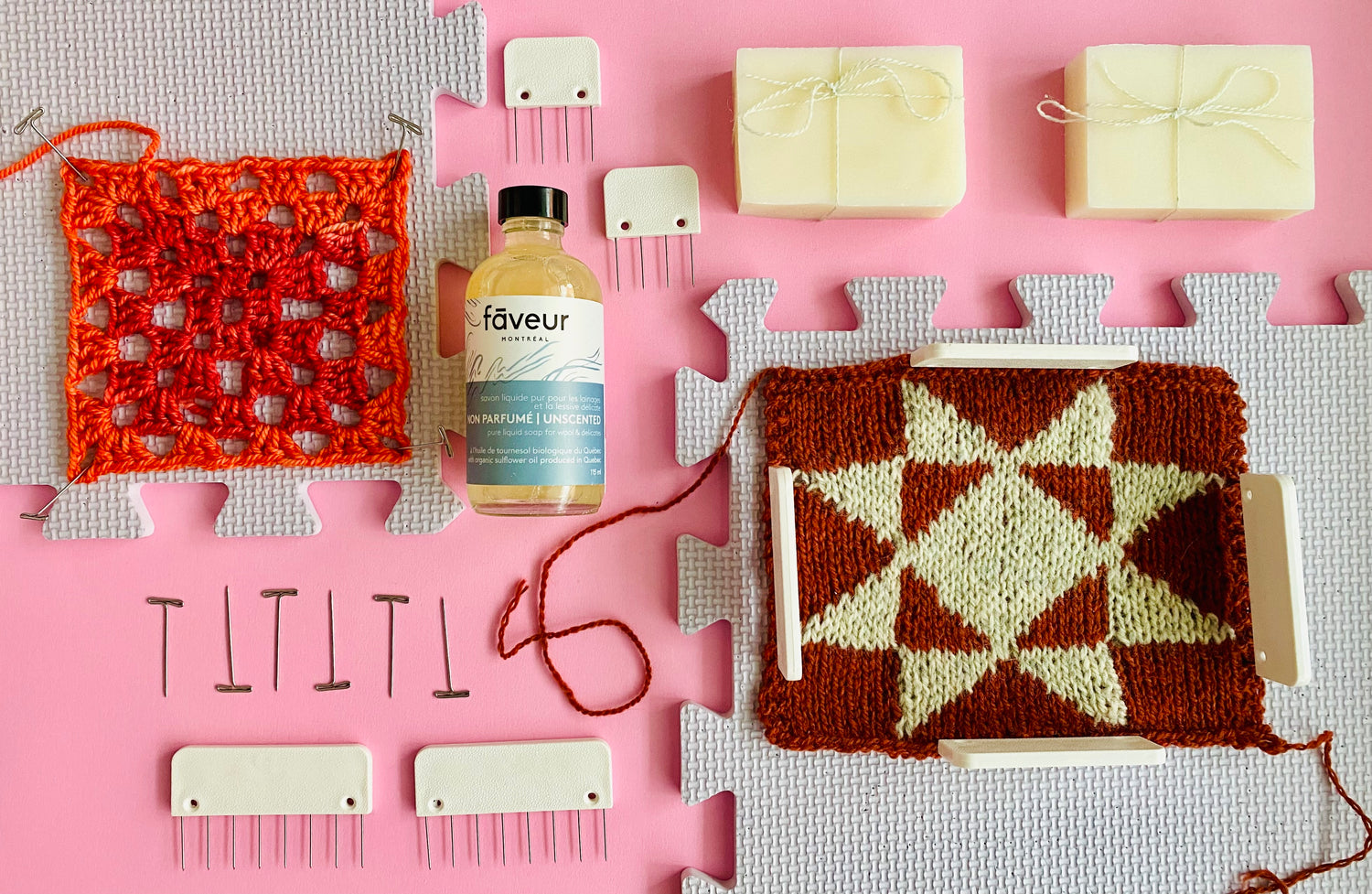Yarn balls in the dryer? Yes!
Why? Ahhhh. For several reasons in fact!
Dryer balls help reduce drying time (thus lowering the electric bill) by 10% to 25% by absorbing some of the moisture and separating clothes from each other during tumbling.
They replace the fabric softener by also eliminating static and this without harmful products for the environment or allergenic perfumes.
Unlike plastic balls or tennis balls (which by the way are much noisier!), these are made of natural material and 100% compostable so at the end of their life, that is to say about 500 loads, they can go to the compost.
Are you convinced?
Continue reading below where to download the pattern in PDF format .

Material used :
30 grams of carded Dorset sheep wool from Laines Douceurs de Kamouraska
15 grams of worsted size raw wool scraps
Small pieces of carded wool of various colors, if desired
Other materials required :
Dishwashing or laundry soap, liquid or solid, your choice
A hot water tank and a cold water tank
Rubber gloves if necessary (optional)

Prepare the material .
Separate the yarn into 3 and make 3 small balls rolled by hand, as tight as possible.
Separate the carded tablecloth into 3 portions, and stretch it a little to make it easier to roll up.
Fill one tub with cold water and one tub with the hottest water possible, but one that is tolerable to the hands (this is where gloves come in, if needed.)

Take the first small ball of wool and wrap it loosely in the carded wool. Take the time to form a ball well, rolling the wool a little in each direction, but without pulling or pressing it. It is at this stage that you will also add the colored wool threads, if desired. I prefer to put them under the last layer of carded tablecloth to prevent them from moving too much at first.
Dip the ball into the tub of hot water. Put a drop of soap in the hands (or rub the hands on the bar of soap) and gently roll the ball between the two hands. At the beginning, it is important to go gently, without rushing, rather by transferring the ball from one hand to the other than by rolling. We don't want to crush the wool, but give it time to felt.
Then quickly dip the ball in the tub of cold water and extract the excess water by squeezing it between your hands.
Continue to roll the ball between your hands (eventually, when the ball has hardened a little, you can put more force into it!) for about fifteen minutes. From time to time, soak the ball alternately in the hot water tank and the cold water tank, adding a little soap if necessary.

When the ball seems firm, solid and well felted (it will have shrunk to about half its initial size), rinse it well and extract as much water as possible by squeezing it between your hands. Give it back its shape and dry it completely, flat or in the dryer!
A few minor details...
* The soap is used to modify the pH of the wool in order to allow the scales of the fiber to open. In theory, pretty much any soap will do, so pick one that smells nice and will keep your hands soft during the process!
* It is recommended to use 3 balls per dryer for a "regular" size dryer and up to 6 for a very large dryer.
* There is no need to wash the balls, they can stay in the dryer between washes.
* If you find that the "anti-static" effect is lost over time, put the balls in the washing machine with a regular load and it will come back.
* Do you find that your balls look ugly and don't do their job as well? Before putting them in the compost, try to give them a little life by applying a new layer of wool and felting it!
* It is important to be well informed before putting essential oils in the dryer (therefore on the dryer balls). Some of them have a rather low flash point and therefore could, in theory, cause a fire in the dryer. Before taking the risk, it is essential to have all the information in hand. Or abstain!









